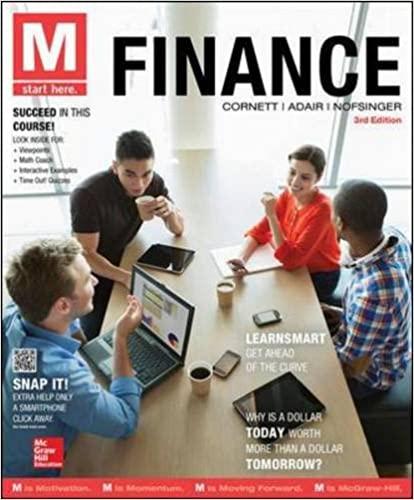Answered step by step
Verified Expert Solution
Question
1 Approved Answer
Financial Analysis The T.P. Jarmon Company manufactures and sells as line of exclusive sportswear. The firm's sales were $600,000 for the year just ended, and
Financial Analysis The T.P. Jarmon Company manufactures and sells as line of exclusive sportswear. The firm's sales were $600,000 for the year just ended, and its total assets exceeded $400,000. The company was started by Mr. Jarmon just 10 years ago and has been profitable every year since its inception. The chief financial officer for the firm, Brent Vehlim, has decided to seek a line of credit from the firm's bank totaling $80,000. In the past, the company has relied on its suppliers to finance a large part of its need for inventory. However, in recent months tight money conditions have led the firm's supplier to offer sizable cash discounts to speed up payments for purchases. Mr. Vehlim wants to use the line of credit to replace a large portion of the firm's payables during the summer, which is the firm's peak seasonable sales period. The firm's two most recent balance sheets were presented to the bank in support of its loan request. In addition, the firm's income statement for the year just ended was provided. These statements are found in the following tables: T.P. Jarmon Company Balance Sheet for the Years Ended 12/31/2009 and 12/31/2010 2009 2010 Cash $15,000 $14,000 Marketable securities 6,000 6,200 Accounts receivable 42,000 33,000 Inventory 51,000 84,000 Prepaid rent 1,200 1,100 Total current assets $115,200 $138,300 Net plant and equipment 286,000 270,000 Total assets $401,200 $408,300 Accounts payable $48,000 $57,000 Notes payable 15,000 13,000 Accruals 6,000 5,000 Total current liabilities $69,000 $75,000 Long-term debt 160,000 150,000 Common stockholders' equity 172,200 183,300 Total liabilities and equity $401,200 $408,300 T.P. Jarmon Company Income Statement for the Year Ended 12/31/2010 Sales (all credit) $600,000 Less: cost of goods sold 460,000 Gross Profit $140,000 Less: operating and interest expenses General and administrative $30,000 Interest 10,000 Depreciation 30,000 Total 70,000 Earnings before taxes $70,000 Less: taxes 27,100 Net income available to stockholders $42,900 Less: cash dividends 31,800 Change in retained earnings $11,100 Norm: 1.8 Current ratio = current assets/current liabilities 138,300/75,000= Norm: .9 Acid-Test Ratio = current assets inventory/current liabilities 138,300-84,000/75,000= Norm:.5 Debt ratio = total debt/total assets Norm: 10.0 Times interest earned = net operating income/interest expense Norm: 20.0 Average collection period = accounts receivable/sales per day (annual credit sales/365) Norm: 7.0 Inventory turnover = cost of goods sold/inventory Norm: 12.0% Return on equity = earnings available to common/common investment Norm: 16.8% Operating return on assets = operating income/ total asset Norm: 14.0% Operating profit margin = operating income/sales Norm: 1.20 Total asset turnover = sales/total assets Norm: 1.80 Fixed asset turnover = sales/net fixed assets A. Calculate the financial ratios for 2010 corresponding to the industry norms provided. B. Which of the ratios reported in the industry norms do you feel should be most crucial in determining whether the bank should extend the line of credit? C. Prepare Jarmon's statement of cash flows for the year ended December 31, 2010. Interpret your findings. D. Use the information provided by the financial ratios and the cash flow statement to decide if you would support making this loan
Step by Step Solution
There are 3 Steps involved in it
Step: 1

Get Instant Access to Expert-Tailored Solutions
See step-by-step solutions with expert insights and AI powered tools for academic success
Step: 2

Step: 3

Ace Your Homework with AI
Get the answers you need in no time with our AI-driven, step-by-step assistance
Get Started


